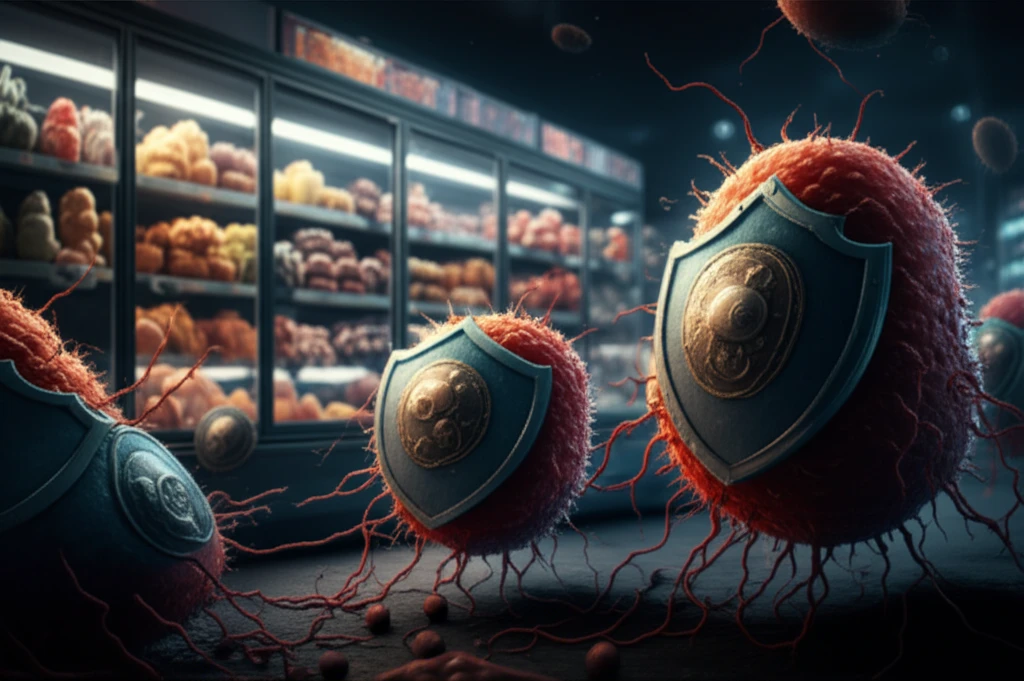
Decoding Food Spoilage: How Bacteria Adapt to Keep Your Groceries 'Fresh'
"Uncover the secrets of how bacteria like Pseudomonas fragi use clever survival tactics in modified atmosphere packaging (MAP) to change their spots and extend spoilage."
Ever wondered why that package of meat in your fridge seems to spoil even when it's sealed tight? The answer lies in the clever survival strategies of bacteria. In the world of food science, one major challenge is understanding and combating spoilage, especially in chilled products. Pseudomonas fragi, a common culprit, plays a significant role in this process, leading to slime formation, odd smells, and ultimately, food waste.
Modified Atmosphere Packaging (MAP), which typically involves a mix of gases like carbon dioxide (CO2) and nitrogen (N2), has become a go-to method for extending the shelf life of perishable goods. The idea is to create an environment that inhibits the growth of spoilage organisms. However, bacteria are nothing if not adaptable. They can tweak their behavior and even their physical characteristics to survive these conditions.
Recent research has delved into how Pseudomonas fragi adapts within MAP environments, specifically focusing on its production of extracellular polymeric substances (EPS). These substances are like tiny shields that bacteria create to protect themselves. By understanding how these EPS change under different conditions, we can potentially develop better ways to keep our food fresher for longer.
What are Extracellular Polymeric Substances (EPS)?

Extracellular Polymeric Substances (EPS) are complex mixtures of biological polymers—such as polysaccharides, proteins, lipids, and nucleic acids—that bacteria secrete into their surrounding environment. Think of it as a bacterial shield, built to withstand the slings and arrows of a hostile world. EPS helps bacteria attach to surfaces, form biofilms, and resist environmental stresses such as desiccation, antibiotics, and even the modified atmospheres used in food packaging.
- Adhesion and Aggregation: EPS facilitates the attachment of bacterial cells to surfaces, promoting the formation of biofilms. This is crucial for colonization and survival in various environments.
- Protection: EPS acts as a protective barrier against environmental stresses, including antimicrobial agents, dehydration, and oxidative stress.
- Nutrient Capture: EPS can bind nutrients and water, creating a microenvironment that supports bacterial growth and survival.
- Structural Support: EPS provides structural integrity to biofilms, enhancing their stability and resilience.
The Future of Food Preservation
By understanding how P. fragi adapts to MAP conditions through changes in its EPS production and cell membrane composition, we can pave the way for more effective food preservation strategies. This knowledge could lead to innovative packaging techniques, antimicrobial interventions, or even the development of beneficial bacteria that outcompete spoilage organisms. As consumers, understanding these microbial dynamics empowers us to make informed choices about food storage and consumption, ultimately reducing waste and improving food safety.
